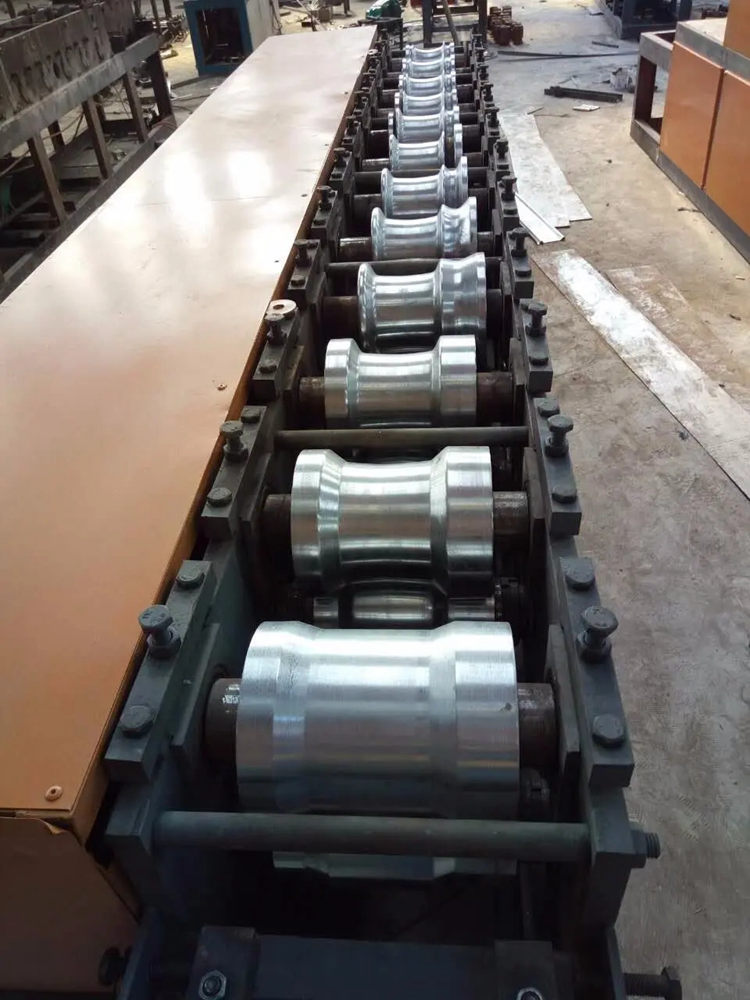
Stud and Track Rolling Machines A Comprehensive Overview
In the realm of metal fabrication and construction, studs and tracks are crucial components, widely used in the creation of walls, ceilings, and other structural elements. The manufacturing of these items can be significantly enhanced through the employment of specialized equipment known as stud and track rolling machines. These advanced machines not only improve efficiency but also ensure precision in the production of metal studs and tracks, which are essential for various architectural applications.
What are Stud and Track Rolling Machines?
Stud and track rolling machines are designed to produce metal components in a continuous process. They use coils of metal, typically galvanized steel, as raw material, which is fed into the machine where it undergoes a series of forming, cutting, and bending operations. The primary function of these machines is to create C-shaped or U-shaped profiles that form the framework of metal stud systems.
The main components of a stud and track rolling machine include feed mechanisms, forming rollers, cutting tools, and a control system. The rollers shape the metal into the desired profile, while precise cutting tools ensure that each piece meets the exact length specifications required for construction projects.
Advantages of Using Stud and Track Rolling Machines
1. Efficiency One of the most significant advantages of stud and track rolling machines is their efficiency. These machines can produce large quantities of metal profiles in a relatively short period of time. This efficiency reduces labor costs and increases productivity on job sites, allowing contractors to complete projects faster.
2. Precision In construction, precise measurements are crucial. Stud and track rolling machines deliver high accuracy in the dimensions of the profiles they produce. This precision helps to reduce waste material and ensures that the components fit together seamlessly during assembly.

3. Customizability Different projects require different specifications. Modern stud and track rolling machines offer a high degree of flexibility, allowing operators to adjust the machine settings to create custom profiles tailored to specific project needs. This adaptability makes them ideal for a wide range of construction applications.
4. Cost-Effectiveness While the initial investment for these machines can be substantial, their ability to produce large volumes of material can lead to significant cost savings in the long run. Additionally, by minimizing waste and maximizing efficiency, these machines support a company's bottom line.
5. Durability Metal studs and tracks are designed to withstand various environmental conditions, and the quality control built into stud and track rolling machines ensures that the products produced are robust and reliable. This durability is essential for structures to maintain their integrity over time.
Applications of Stud and Track Rolling Machines
Stud and track rolling machines find application in various sectors, including commercial construction, residential building, and industrial projects. They are commonly used to manufacture the framing systems for walls, ceilings, and partitions. Additionally, their use extends to creating components for specialized applications, such as soundproofing systems and fire-resistant walls, enhancing the versatility of these machines for different construction needs.
Conclusion
In the competitive world of construction, the demand for efficient and precise manufacturing processes continues to grow. Stud and track rolling machines play a pivotal role in meeting these demands, offering numerous advantages such as efficiency, precision, customizability, cost-effectiveness, and durability. As the construction industry evolves, embracing automation and advanced machinery becomes increasingly important, making stud and track rolling machines an invaluable asset for manufacturers and contractors alike.
In summary, investing in stud and track rolling machines not only streamlines the production process but also provides the quality and reliability required for modern construction projects. As technology advances, these machines will continue to evolve, further enhancing their capabilities and the overall efficiency of the construction industry.